Manufacturer, Supplier & Exporter of
a wide range of Dyes, Pigments & Food Colours
Direct Dyes
Before going further let us first understand what is Direct Dyes?
Direct dyes, also known as substantive dyes, are a type of water-soluble coloured compounds that have a strong attraction to fibers and can be directly absorbed by them. This group of dyes includes benzidine derivatives and is known for its affordability, easy application, and ability to produce bright colours. However, washfastness is usually poor and can be improved by after treatment.
One of the most common uses of direct dyes is in the production of packaged dyes for home use. They are also used in the textile industry to dye natural fibers such as cotton, silk, and wool. Direct dyes have a particular affinity for cellulosic fibers, making them ideal for dyeing cotton and other similar materials.
Direct dyes have some unique properties, including a high degree of water solubility and a tendency to spread evenly on the fiber surface. These properties allow the dye to penetrate deep into the fibers and produce a uniform and long-lasting colour. However, direct dyes are generally not as lightfast or washfast as other types of dyes, which may limit their use in some applications.
In summary, direct dyes are a class of water-soluble coloured compounds that are attracted to fibers and can be directly absorbed by them. They are inexpensive, easy to apply, and produce bright colours, but may have poor washfastness. Direct dyes are commonly used for home dyeing and in the textile industry to dye cellulosic fibers.
To find the right Direct Dye and dyeing procedure for your business, we invite you to explore one of the best Direct Dyes Manufacturers in India i.e. Megha International. We offer a diverse collection of best Direct Dyes for wool and consumables that cater to various requirements. Moreover, we keep pace with the advancements in digital textile printing techniques to ensure that our customers have access to the latest technologies. For detailed information on the product Download Direct Dyes PDF
One of the key properties of acidic dyes is their high solubility in water, which allows for efficient and effective dyeing. They also have better light fastness than basic dyes, meaning they are less likely to fade when exposed to light over time.
Acid dyes contain sulfonic acid groups, usually present as sodium sulfonates, which increase their solubility in water and give the dye molecules a negative charge. This helps them bond with the positively charged protein fibers in textiles, resulting in vibrant and long-lasting colours.
To find the right Acid Dye and dyeing procedure for your business, we invite you to explore one of the best Acid Dyes Manufacturers in India i.e. Megha International. We offer a diverse collection of best acid dyes for wool and consumables that cater to various requirements. Moreover, we keep pace with the advancements in digital textile printing techniques to ensure that our customers have access to the latest technologies. For detailed information on the product Download Acid Dyes PDF
Are you looking for Direct Dyes? Transform your materials into vibrant masterpieces!
Buy High quality Direct Dyes at Best Price - Megha International
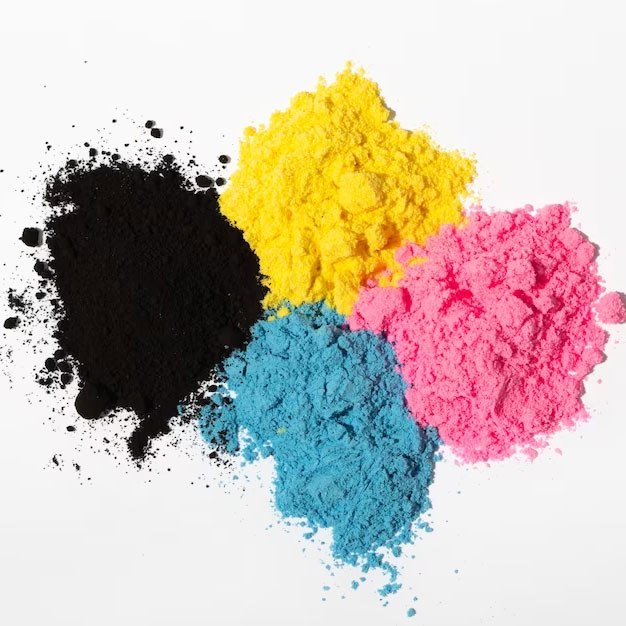
Direct Dyes Manufacturing Process
The manufacturing process of direct dyes typically involves several stages. The following is a general overview of the process:
The first stage of direct dye production involves the preparation of intermediates, which are the building blocks for the final dye molecule. Intermediates are typically derived from aromatic amines and other chemicals through a series of chemical reactions.
The next stage involves the coupling of the intermediates with a diazonium salt. This reaction forms an azo compound, which is the chromophore responsible for the colour of the dye.
After the coupling reaction, the dye is purified to remove any impurities or unreacted intermediates. Purification typically involves filtration, precipitation, or other separation techniques.
- The final stage of the manufacturing process involves drying and packaging the dye. The dye is usually dried to a powder form and packaged in suitable containers for transportation and storage.
Types of Direct Dyes
Some common Direct Dyes examples include:
| Direct DYES | General | ||||||||||
| 2% | Product Name | C.I Name | CAS NO. | Light | Washing | Water | Dischargebility | Direct DYES uses | Price | MSDS | TFDS |
| Paper Yellow T | Yellow 11 | 1325-38-8 | (5-6) | 3 | 5 | D | Used for dyeing paper, leather, silk, and cotton. | ||||
| Fast Lemon Yellow 5GLL | yellow 44 | 8005-52-5 | 5 | 5 | (4-5) | D | Used for dyeing wool, silk, and nylon. | ||||
| Fast Yellow RL | Yellow 86 | 61951-86-8 | 6 | (3-4) | (3-4) | D | Used for dyeing cotton, rayon, and paper. | ||||
| Direct Yellow 142 | Yellow 142 | 71902-08-4 | 5 | 5 | (4-5) | D | Used for dyeing wool, silk, and nylon. | ||||
| Orange TGL | Orange34 | 15793-73-4 | (6-7) | 2 | 2 | D | Used for dyeing wool, silk, and nylon. | ||||
| Fast Orange SE | Ornage 26 | 3626-36-6 | (2-3) | 2 | 2 | M | Used for dyeing wool, silk, and nylon. | ||||
| Orange TGLL | Orange 39 | 1325-54-8 | (6-7) | 2 | 2 | D | Used for dyeing wool, silk, and nylon. | ||||
| Fast Scarlet 4BS | Red 23 | 3441-14-3 | (4-5) | (1-2) | 1 | D | Used for dyeing wool, silk, and nylon. | ||||
| Fast Orange 12B | Red 31 | 12237-00-2 | 2 | (1-2) | (1-2) | MD | Used for dyeing wool, silk, and nylon. | ||||
| Fast Red 5B | Red 80 | 2610-10-8) | 6 | (3-4) | (3-4) | MD | Used for dyeing wool, silk, and nylon. | ||||
| Fast Red 5BL | Red 81 | (2610-11-9 | 3 | 3 | (3-4) | MD | Used for dyeing wool, silk, and nylon. | ||||
| Fast Violet MB | Violet 9 | (6227-02-3 | (2-3) | 2 | (3-4) | MD | Used for dyeing wool, silk, and nylon. | ||||
| Direct Violet 81 | Violet 81 | 12222-04-7 | 4 | 2 | (3-4) | MD | Textiles, paper, leather, and wood staining | ||||
| Sky Blue FF | Blue 15 | 2429-74-5 | 5 | (2-3) | (2-3) | ND | Textiles, paper, leather, and wood staining | ||||
| Direct Blue 2 | Blue 2 | 1324-58-9 | (5-6) | 2 | 4 | ND | Textiles, paper, leather, and wood staining | ||||
| Fast Turq.Blue GL | Blue 86 | 1330-38-7 | 7 | 2 | 2 | MD | Textiles, paper, leather, and wood staining | ||||
| NA | Blue 198 | 12236-82-7 | (6-7) | (3-4) | 3 | MD | Textiles, paper, leather, and wood staining | ||||
| Blue GLL | Blue 71 | 4399-55-7 | (5-6) | 2 | 2 | D | Textiles, paper, leather, and wood staining | ||||
| Direct Brown 2 | Brown 2 | 5413-75-2 | 3 | (4-5) | 4 | MD | Textiles, paper, leather, and wood staining | ||||
| Black VSF | Black 22 | 6473-13-8 | 4 | 3 | 3 | D | Textiles, paper, leather, and wood staining, inks | ||||
| Direct Black 38 | Black 38 | 1937-37-7 | 4 | 3 | 3 | D | Textiles, paper, leather, and wood staining, inks | ||||
| Direct black 19 | Black 19 | 6428-31-5 | 3 | 2 | 2 | D | Textiles, paper, leather, and wood staining, inks | ||||
| Black OB | Black 80 | 12237-22-8 | 2 | (3-4) | (3-4) | D | Textiles, paper, leather, and wood staining, inks | ||||
| Black AR | Black 168 | 12237-63-7 | (2-3) | (3-4) | (3-4) | MD | Textiles, paper, leather, and wood staining, inks | ||||
Direct Dye Properties / Characteristics - Direct Dyes Manufacturer in India
Direct dyes for cotton possess a number of distinct properties and characteristics that make them well-suited for various dyeing applications. These properties of Direct Dyes include:
- High solubility in water: Direct dyes are highly water-soluble and can easily be dissolved in water to form a dye solution.
- Affinity for cellulosic fibers: Direct dyes have a strong affinity for cellulosic fibers, allowing them to penetrate deeply and produce even and long-lasting colours.
- Brightness of colour: Direct dyes are known for producing bright and vivid colours, which can range from subtle pastels to deep and rich shades.
- Poor washfastness: Direct dyes are not as washfast as other types of dyes, and the colour may fade over time with repeated washing. However, some direct dyes can be treated with after-treatments to improve their washfastness.
- Easy application: Direct dyes are easy to apply, and they can be used with a variety of dyeing methods such as immersion dyeing, padding, or printing.
- Compatibility with other dyes: Direct dyes can be mixed with other direct dyes to produce new and unique colours. They can also be combined with other types of dyes, such as acid or reactive dyes, to achieve specific colour effects.
Overall, direct dyes are valued for their ability to produce bright and vivid colours on cellulosic fibers. However, their poor washfastness may limit their use in some applications.

Advantages of Direct Dyes
The advantages of direct dyes include:
- Easy to use: Direct dyes are easy to apply and can be used with a variety of dyeing methods. They can be applied through immersion dyeing, padding, or printing, which makes them a versatile dyeing option.
- Low cost: Direct dyes are generally less expensive than other types of dyes, making them a cost-effective option for many textile manufacturers.
- Bright colours: Direct dyes are known for producing bright and vivid colours, which can range from subtle pastels to deep and rich shades. This makes them a popular choice for creating colourful textiles.
- Good colour penetration: Direct dyes have a strong affinity for cellulosic fibers, allowing them to penetrate deeply and produce even and long-lasting colours.
- Compatibility with other dyes: Direct dyes can be mixed with other direct dyes or with other types of dyes, such as acid or reactive dyes, to achieve specific colour effects.
- Environmentally friendly: Direct dyes are generally considered to be more environmentally friendly than other types of dyes, such as azo dyes, because they do not contain harmful chemicals.
Overall, the advantages of direct dyes make them a popular choice for many textile manufacturers, especially those who prioritize ease of use, bright colours, and cost-effectiveness.
Application of Direct Dyes
Direct dyes are commonly used to dye cellulosic fibers such as cotton, linen, and rayon. They can be used in a variety of dyeing methods, including immersion dyeing, padding, or printing. Some of the common applications of direct dyes include:
- Textile dyeing: Direct dyes are widely used to dye textiles such as clothing, home furnishings, and upholstery.
- Paper dyeing: Direct dyes can be used to dye paper and other cellulose-based materials, which can be useful in the production of colourful paper products.
- Leather dyeing: Direct dyes can also be used to dye leather, which can be useful in the production of colourful leather products.
- Food colouring: Some direct dyes are used as food colorants, particularly in the manufacturing of candy and other confectionery products.
- Inkjet printing: Direct dyes can be used in inkjet printing to produce high-quality, vibrant prints on cellulosic substrates.
Overall, the versatility and ease of use of direct dyes make them a popular choice for a wide range of applications in various industries.
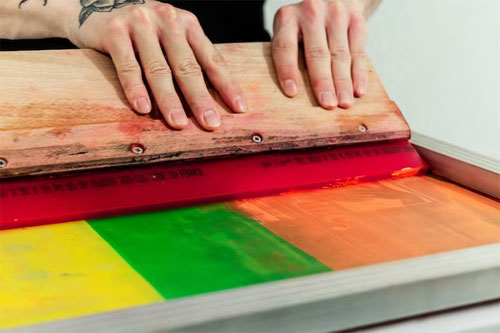
Textile Colouring
Reactive dyes for cotton and other natural fibers are widely utilized in the textile industry for their colouring properties on fabrics such as cotton, wool, silk, and others. They are also used to dye synthetic fibers such as polyester, nylon, and acrylic.
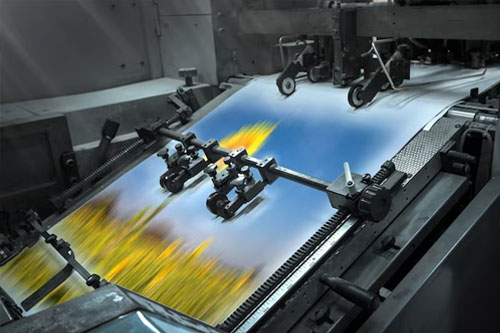
Printing
Reactive dyes can be used to print designs on fabrics using different printing techniques such as screen printing, roller printing, and inkjet printing.
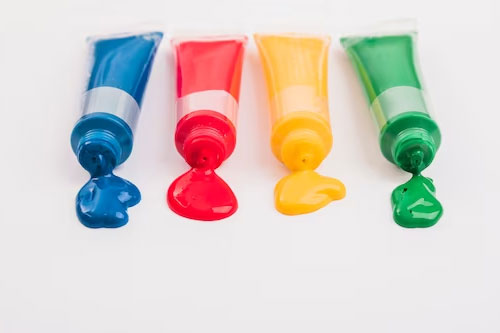
Paper Colouring
Reactive dyes are also used to colour paper and paper products. They are used in the production of paper for books, magazines, and other printed materials.
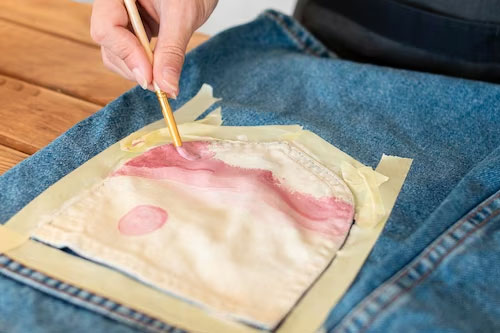
Leather Colouring
Reactive dyes are used to colour leather and leather products such as shoes, bags, and belts.
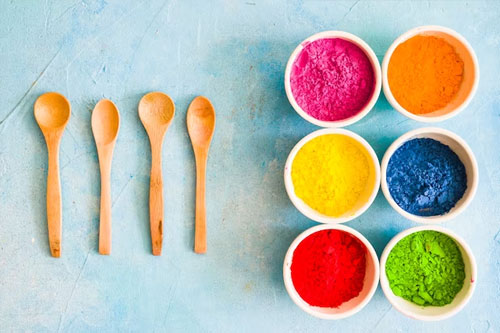
Food Colouring
Some reactive dyes are also used as food colouring agents, although their use in food is highly regulated and limited.
Overall, reactive dyes are versatile and widely used in various industries for their excellent colour fastness and durability.
About Megha International
Looking for a Direct Dyes Exporter for brazil?
Megha International (ISO 9001: 2008) Established in the year 1995, at Mumbai, India is the best Direct Dyes manufacturer that offers an extensive range of dyes in national as well as international markets. Our research and development team carries out constant studies to develop products that reliably set us apart from our competitors and serve our clienteles best. With a remarkable focus on innovation and leveraging new-age expertise, we endeavour to sustain and develop a leading organization on a global scale. The company is a top Direct Dyes manufacturer in India, and is striving to deliver the finest quality of products to the consumers, while being environmentally sensitive.
Market Area of Megha International
As a prominent Direct Dyes supplier, Megha International is proud to export Direct Dyes in a wide range of countries across the globe. Our reach extends to many countries in Asia, including China, Vietnam, Singapore, Thailand, Malaysia, Korea, Philippines, Japan, and Indonesia.
We also serve clients in the Middle East, such as UAE, Saudi Arabia, Kuwait, Qatar, Iraq, and Iran.
In North Africa, we have clients in Algeria, Morocco, and Tunisia, while in Europe, we offer our services to Russia, the UK, France, Italy, Germany, the Netherlands, Romania, and Poland.
In South America, we serve clients in Brazil, Argentina, Colombia, Peru, and Guatemala, as well as in Central America, including Mexico, Costa Rica, and Honduras.
Finally, we also provide our services to clients in the United States and Chile. No matter where our clients are located, we are committed to delivering high-quality dyes and exceptional customer service.
We also serve clients in the Middle East, such as UAE, Saudi Arabia, Kuwait, Qatar, Iraq, and Iran.
In North Africa, we have clients in Algeria, Morocco, and Tunisia, while in Europe, we offer our services to Russia, the UK, France, Italy, Germany, the Netherlands, Romania, and Poland.
In South America, we serve clients in Brazil, Argentina, Colombia, Peru, and Guatemala, as well as in Central America, including Mexico, Costa Rica, and Honduras.
Finally, we also provide our services to clients in the United States and Chile. No matter where our clients are located, we are committed to delivering high-quality dyes and exceptional customer service.
Frequently Asked Question about Vat Dyes
Direct dyes are a class of water-soluble dyes that have a strong affinity for cellulosic fibers and can be used to dye textiles such as cotton, linen, and rayon.
Direct dyes are different from other types of dyes, such as acid dyes and reactive dyes, because they do not require a mordant or a fixing agent to bond to the fabric. They can be applied directly to the fabric.
Direct dyes are generally considered to be more environmentally friendly than other types of dyes, such as azo dyes, because they do not contain harmful chemicals.
Direct dyes can be used with a variety of dyeing methods, including immersion dyeing, padding, or printing. Always follow the manufacturer’s instructions for best results.
Direct dyes can produce a wide range of colours, from subtle pastels to deep and rich shades. The specific colours will depend on the dye formulation and the fabric being dyed.
Direct dyes are not as washfast as other types of dyes, and the colour may fade over time with repeated washing. However, some direct dyes can be treated with after-treatments to improve their washfastness.
Direct dyes can be mixed with other direct dyes or with other types of dyes, such as acid or reactive dyes, to achieve specific colour effects.
Direct dyes are commonly used in textile dyeing, paper dyeing, leather dyeing, food colouring, inkjet printing, and biological staining.
Direct dyes are primarily designed for use on cellulosic fibers such as cotton, linen, and rayon. They may not work as well on synthetic fabrics such as polyester.
Direct dyes can be used to dye dark fabrics, but the colour may not be as vibrant as it would be on lighter fabrics. Pre-bleaching the fabric can help achieve brighter colours.
